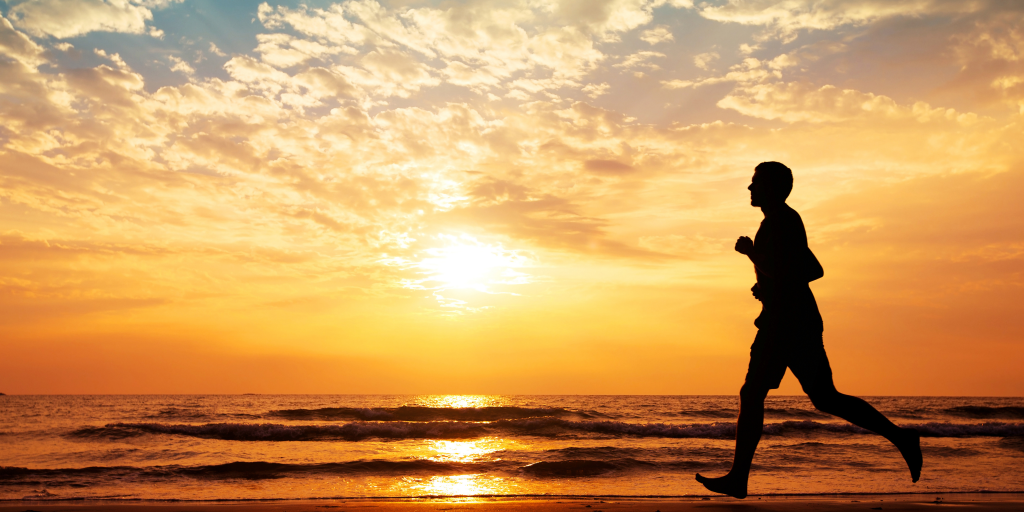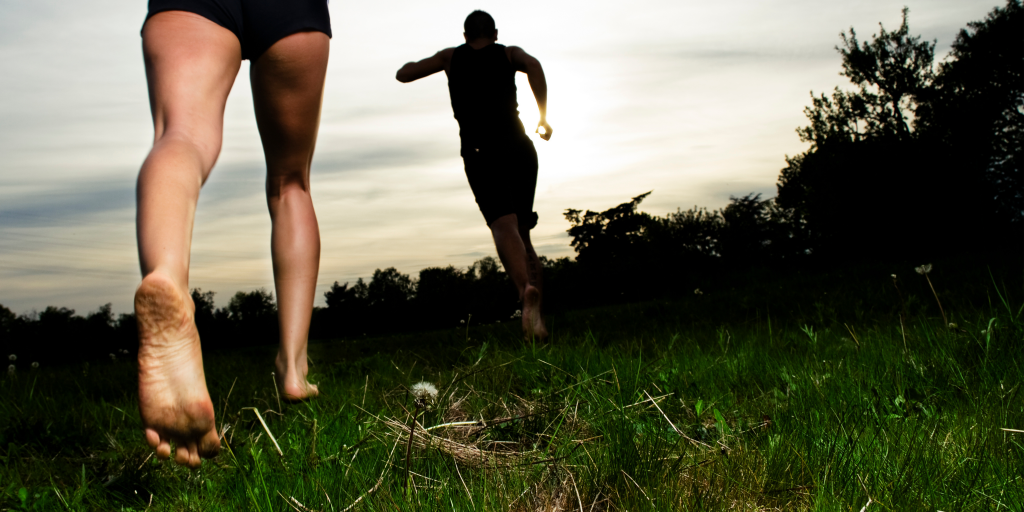Walking barefoot keeps you fit for longer!
Footwear was developed for a world in which feet need to be protected from the ground. Walking barefoot is the most natural way to get around. It ensures well-developed foot muscles and a healthy posture. That is why it is important to give your feet regular opportunities to make natural contact with the ground.
Why is walking barefoot healthy?
When you walk barefoot, you will experience something completely new. Normally, our feet only feel the soles of our shoes, which are often firm, tight and unyielding. This does not correspond to the normal feeling we get when we walk barefoot. The foot is held in place exclusively by the muscles, which are trained through regular use.

For children it is particularly important, spend a lot of time without shoes. Your Muscles are still developing and will atrophy if they are forced into shoes and have no room to move.
What effects does walking barefoot have on the anatomy?
When we walk in shoes, the sole of the foot cannot adapt to the natural ground as it rests on the straight sole of the shoe. The muscles are used in a completely different way and also adapt to the shape of the shoe. When walking barefoot,on the other hand, the body adopts a completely different posture and ensures that foot misalignments cannot occur.
As the sole of the foot has a curved surface, it cannot adapt to a straight shoe sole. As a result, the middle part of the sole of the foot remains unsupported in the air, which can lead to misalignment of the entire foot. It is not uncommon for children to have flat, fallen arches, bowed or splayed feet if their feet are too often in (fixed) shoes. If children are often allowed to walk barefoot or on socks on meadows or in the sand, the entire sole of the foot comes into contact with the ground and is trained in a natural way.
Why do we so rarely go barefoot?
Shoes are designed to protectfeet from the cold, sharp objects such as glass and stones, moisture and heat. Our feet are exposed to these surfaces every day, which means that there are few opportunities to walk barefoot. This is only possible without danger in meadows, on riverbanks, in forests and by lakes. These surfaces are shaped differently, sometimes giving way and thus adapting to the shape of the foot. Unfortunately, this experience is not possible on hard floors and asphalted roads and paths.
Some daycare centers have addressed this topic in a special way by creating nature trails in their open spaces. Here, children can feel different materials with their feet, which trains their mindfulness and perceptiveness. As with a Kneipp cure, this not only strengthens the immune system, but also supports the natural development of muscles.
Barefoot walkers develop better motor skills!
It has now been scientifically proven that walking barefoot is not only healthy for the muscles, but also promotes motor development in children. This fact was proven by sports scientist Prof. Astrid Zech (University of Jena), who carried out a comparison of South African and German children with South African colleagues (Stellenbosch University near Cape Town). It became clear that South African children, who spend most of the day barefoot, performed significantly better than German children in running, balancing and jumping because their motor skills were much better developed.
What is the best surface for walking barefoot?
The more varied the surface, the more the foot muscles are used and trained. If you walk barefoot across a meadow, you will feel that the uneven ground allows the soles of your feet to adapt to it. Do your feet good by walking barefoot through dry or wet sand, across a meadow and on any surface that has been created naturally.

Children should be allowed to play barefoot in the sandpit and climb trees without shoes. Of course, safety should always be a priority. In summer, for example, there are lots of insects on flowering meadows, which can be dangerous for children if they step on them barefoot. In this case, socks that protect children’s feet without restricting their freedom of movement are advisable.
If you rarely have the opportunity to walk outdoors without shoes, only walk on socks in your home. The ground may be flat, but your feet have space to stretch their muscles.
Does walking barefoot promote callus formation?
The opportunities to walk barefoot are few and far between in our everyday lives. Therefore, you don’t need to worry about developing calluses on your feet if you walk barefoot on the beach or in meadows a few days a year. Calluses primarily appear with age because the skin becomes drier and the thicker layers of skin on the feet no longer regenerate sufficiently.
To develop calluses on your feet at a young age, you would have to walk barefoot through hot desert sand or the steppe for several weeks. Then the outer skin cells would transform and thicken to reduce sensitivity and pain.
Is walking barefoot good for your posture?
Walking in nature without shoes is not only good for the foot muscles. The whole body benefits from this time out, as the position of your feet affects your posture. Many illnesses, such as joint and back pain, can have their origin in a misalignment of the feet. In many cases, postural problems can also be traced back to flat or fallen arches that have developed as a result of wearing shoes regularly.

If you are struggling with these problems, you should allow yourself regular time out in nature and walk barefoot a lot, especially in the warmer months. The muscles are able to react to the changed surface and remodel themselves. This takes time, as the muscles are fully developed in an adult. By walking barefoot regularly, however, the symptoms will recede and your posture will change for the better.
Is it possible to jog barefoot?
You can jog barefoot in any case, but you should start with short distances. If you have only ever walked in shoes, you will step on your heel first, which is bad for your joints and spine. This type of walking is caused by sturdy shoes and does not correspond to a person’s natural gait. Minimalist running shoes and barefoot running shoes can provide additional protection against injuries.
Run barfoot, your gait changes. You first step on with your front foot and then roll off which results in a completely different way of running. To get the whole body used to this change in posture and movement, you should start with short training sessions and slowly increase them.